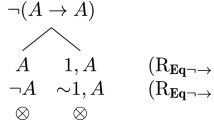Abstract
Object-Role Modeling (ORM) allows composite reference schemes for object types to be portrayed using either objectification (in the sense of situational nominalization) or coreference (as defined in ORM rather than linguistics). In practical modeling, cases can arise where a subtype of a compositely identified object type has a natural reference scheme that utilizes only some components of the supertype’s reference scheme. Using the supertype’s reference scheme to verbalize facts for the subtype then leads to redundancy or other irrelevance in the verbalization. Moreover, if such cases are input directly to the ORM’s standard relational mapping procedure (Rmap), this can lead to table schemes that are not fully normalized. The paper identifies ways in which such problems can arise, and proposes ways to avoid these problems, partly by extending earlier work on reference scheme reduction, role redirection, and disjunctive reference, illustrating the approach with some practical examples.
Access this chapter
Tax calculation will be finalised at checkout
Purchases are for personal use only
Preview
Unable to display preview. Download preview PDF.
Similar content being viewed by others
References
Bakema, G., Zwart, J., van der Lek, H.: Fully Communication Oriented Information Modelling. Ten Hagen Stam (2000)
Carver, A.: How To Avoid Redundant Object-References. In: Meersman, R., Tari, Z., Herrero, P. (eds.) OTM-WS 2008. LNCS, vol. 5333, pp. 770–779. Springer, Heidelberg (2008)
Carver, A.: Roles in ORM: A Suggested Semantics. In: Meersman, R., Dillon, T., Herrero, P. (eds.) OTM-WS 2011. LNCS, vol. 7046, pp. 360–369. Springer, Heidelberg (2011)
Carver, A., Halpin, T.: Atomicity and Semantic Normalization. International Journal of Information System Modeling and Design 1(2), 23–39 (2010)
Curland, M., Halpin, T.: The NORMA Software Tool for ORM 2. In: Soffer, P., Proper, E. (eds.) CAiSE Forum 2010. LNBIP, vol. 72, pp. 190–204. Springer, Heidelberg (2011)
Halpin, T.: What is an Elementary Fact? In: Nijssen, G.M., Sharp, J. (eds.) Proc. 1st NIAM-ISDM Conf. (1993)
Halpin, T.: Objectification of Relationships. In: Siau, K. (ed.) Advanced Topics in Database Research, vol. 5, pp. 106–123. Idea Publishing Group, Hershey (2006)
Halpin, T.: Modeling of Reference Schemes. In: Nurcan, S., Proper, H.A., Soffer, P., Krogstie, J., Schmidt, R., Halpin, T., Bider, I. (eds.) BPMDS 2013 and EMMSAD 2013. LNBIP, vol. 147, pp. 308–323. Springer, Heidelberg (2013)
Halpin, T., Carver, A., Owen, K.M.: Reduction Transformations in ORM. In: Meersman, R., Tari, Z. (eds.) OTM-WS 2007, Part I. LNCS, vol. 4805, pp. 699–708. Springer, Heidelberg (2007)
Halpin, T., Curland, M.: Recent Enhancements to ORM. In: Demey, Y.T., Panetto, H. (eds.) OTM 2013 Workshops. LNCS, vol. 8186, pp. 467–476. Springer, Heidelberg (2013)
Halpin, T., Morgan, T.: Information Modeling and Relational Databases, 2nd edn. Morgan Kaufmann Publishers (2008)
Halpin, T., Ritson, R.: Fact-Oriented Modelling and Null Values. In: Srinivasan, B., Ze-leznikov, J. (eds.) Research and Practical Issues in Databases. World Scientific, Singapore (1992)
Levinson, S.C.: Pragmatics. Cambridge University Press, Cambridge (1983)
Author information
Authors and Affiliations
Editor information
Editors and Affiliations
Rights and permissions
Copyright information
© 2013 Springer-Verlag Berlin Heidelberg
About this paper
Cite this paper
Carver, A., Halpin, T. (2013). Reference Scheme Reduction on Subtypes in ORM. In: Demey, Y.T., Panetto, H. (eds) On the Move to Meaningful Internet Systems: OTM 2013 Workshops. OTM 2013. Lecture Notes in Computer Science, vol 8186. Springer, Berlin, Heidelberg. https://doi.org/10.1007/978-3-642-41033-8_59
Download citation
DOI: https://doi.org/10.1007/978-3-642-41033-8_59
Publisher Name: Springer, Berlin, Heidelberg
Print ISBN: 978-3-642-41032-1
Online ISBN: 978-3-642-41033-8
eBook Packages: Computer ScienceComputer Science (R0)




